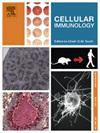蜱传疾病中的净毒和训练有素的免疫力:可能的致病作用。
IF 2.9
4区 医学
Q2 CELL BIOLOGY
引用次数: 0
摘要
蜱虫传播的各种病原体会引起不同的免疫反应,就像新出现的α-Gal综合征一样,这种综合征与蜱虫叮咬过敏反应有关。中性粒细胞胞外捕获器的释放机制(称为NETosis)以及应对蜱传微生物的训练有素的免疫机制尚未得到广泛研究。在我们的论文中,我们探讨了由蜱虫叮咬引发的传染病领域中NETosis和训练有素的免疫力之间错综复杂的相互作用,以及它们在自身免疫中可能起到的致病作用。我们进行了广泛的文献检索,以确定本综述的研究内容,并考虑了过去几年中发表的英文文章和综述。此外,我们还仔细研究了所有收录论文和相关综述文章的参考文献,以确保全面覆盖。我们揭示了这些先天性免疫反应之间的合理相关性及其在某些病理条件下的潜在影响,特别关注一些自身免疫性疾病。这些发现提供了新的视角,有助于临床医生更深刻地理解某些自身免疫性症状的免疫发病机制,在蜱虫肆虐的地区,临床医生应将蜱传疾病(TBDs)纳入鉴别诊断中。本文章由计算机程序翻译,如有差异,请以英文原文为准。
Netosis and trained immunity in tick-borne diseases: a possible pathogenetic role
Various types of pathogens transmitted by ticks elicit distinct immune responses just like the emerging α-Gal syndrome that is associated with allergic reactions to tick bites. The mechanisms of Neutrophil Extracellular Traps release (called NETosis) and trained immunity in response to tick-borne microbes have not been extensively investigated. In our paper, we explored the intricate interplay of NETosis and trained immunity within the realm of infectious diseases triggered by tick bites and their possible pathogenetic role in autoimmunity. We conducted an extensive literature search to identify studies for this review, considering articles and reviews published in English within the last years. Additionally, we scrutinized the references of all included papers and relevant review articles to ensure comprehensive coverage. We shed light on a plausible correlation between these innate immune responses and their potential implication in certain pathological conditions, with a specific focus on some autoimmune diseases. These findings offer new perspectives for a more profound comprehension of the immunopathogenesis of certain autoimmune-like signs where clinicians should include Tick-Borne Diseases (TBDs) in their differential diagnoses, in those geographical areas of tick infestation.
求助全文
通过发布文献求助,成功后即可免费获取论文全文。
去求助
来源期刊

Cellular immunology
生物-免疫学
CiteScore
8.20
自引率
2.30%
发文量
102
审稿时长
30 days
期刊介绍:
Cellular Immunology publishes original investigations concerned with the immunological activities of cells in experimental or clinical situations. The scope of the journal encompasses the broad area of in vitro and in vivo studies of cellular immune responses. Purely clinical descriptive studies are not considered.
Research Areas include:
• Antigen receptor sites
• Autoimmunity
• Delayed-type hypersensitivity or cellular immunity
• Immunologic deficiency states and their reconstitution
• Immunologic surveillance and tumor immunity
• Immunomodulation
• Immunotherapy
• Lymphokines and cytokines
• Nonantibody immunity
• Parasite immunology
• Resistance to intracellular microbial and viral infection
• Thymus and lymphocyte immunobiology
• Transplantation immunology
• Tumor immunity.
 求助内容:
求助内容: 应助结果提醒方式:
应助结果提醒方式:


